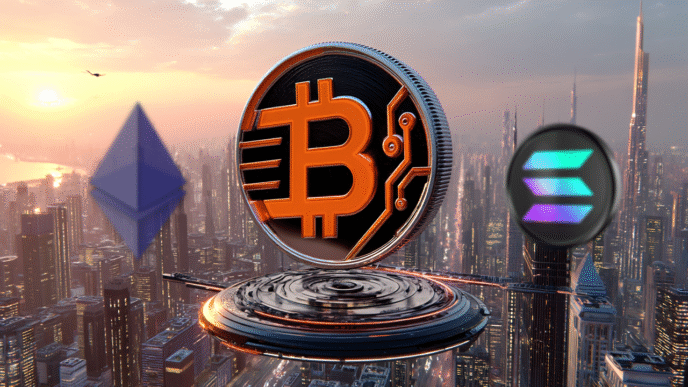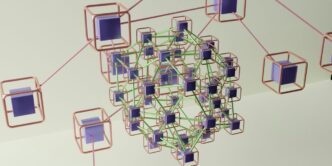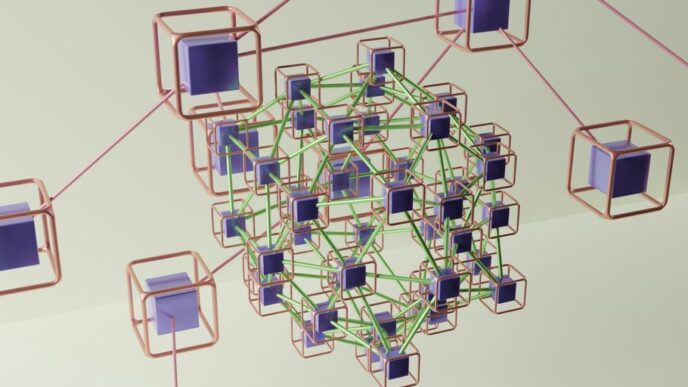The rise of 5G technology is changing how we connect and communicate. With faster speeds and better reliability, 5G is set to transform various sectors, including healthcare, transportation, and urban development. This article explores the key aspects of 5G infrastructure and its potential impact on our future, highlighting both the benefits and challenges that come with this new technology.
Key Takeaways
- 5G technology offers faster speeds and better reliability than previous mobile networks.
- It plays a crucial role in the development of smart cities and connected devices.
- Challenges in deploying 5G include high costs and regulatory issues.
- 5G can significantly enhance healthcare services through telemedicine and connected devices.
- The technology is expected to drive economic growth and create new job opportunities.
The Evolution of 5G Infrastructure

Historical Context of Mobile Networks
The journey of mobile networks began with 1G, which introduced voice calls. 2G brought text messaging, while 3G enabled mobile internet. 4G further enhanced speed and connectivity, paving the way for the revolutionary 5G technology. Today, 5G is transforming how we connect and communicate.
Key Innovations in 5G Technology
5G is built on several groundbreaking innovations:
- New Radio (NR): This standard defines how devices connect to 5G networks.
- Network Slicing: Allows multiple virtual networks to operate on a single physical infrastructure, enhancing flexibility.
- Beamforming: Directs signals to specific devices, improving coverage and efficiency.
Comparing 5G to Previous Generations
5G stands out from earlier generations in several ways:
| Feature | 4G | 5G |
|---|---|---|
| Speed | Up to 100 Mbps | Up to 10 Gbps |
| Latency | 30-50 ms | 1 ms |
| Device Capacity | 2,000 devices/cell | 1 million devices/cell |
5G represents a significant leap in mobile technology, unlocking new possibilities for connectivity and innovation.
Key Components of 5G Infrastructure

Small Cells and Their Role
Small cells are essential for 5G networks, providing coverage in densely populated areas. They are low-power base stations that help improve network capacity and speed. These small cells are crucial for ensuring that users experience high-quality connections, especially in urban settings. Here are some key points about small cells:
- They can be installed on streetlights, buildings, and utility poles.
- They help reduce the distance between the user and the network, enhancing signal strength.
- Small cells support a higher number of connected devices simultaneously.
Massive MIMO Technology
Massive MIMO (Multiple Input Multiple Output) is a game-changing technology in 5G. It uses many antennas at the base station to send and receive more data at once. This leads to better performance and efficiency. Some highlights of Massive MIMO include:
- Increased capacity: It can serve multiple users at the same time without interference.
- Improved energy efficiency: It uses less power while providing better service.
- Enhanced reliability: It ensures a stable connection even in crowded areas.
Beamforming Techniques
Beamforming is another important aspect of 5G technology. It directs signals to specific users rather than broadcasting them in all directions. This technique improves both speed and reliability. Here’s how beamforming benefits 5G:
- Focused signals: It reduces interference and enhances connection quality.
- Better coverage: It allows signals to reach users in challenging environments.
- Increased data rates: Users can enjoy faster download and upload speeds.
In summary, the key components of 5G infrastructure, including small cells, massive MIMO, and beamforming, work together to create a faster and more reliable network. These technologies are paving the way for a connected future, enabling innovations across various sectors.
Challenges in Deploying 5G Infrastructure
Infrastructure Costs and Investments
Deploying 5G infrastructure requires significant financial investment. This includes costs for new antennas, base stations, and other essential equipment. Many companies focus on urban areas first, where the potential customer base is larger, leading to a slower rollout in rural regions. Here are some key points to consider:
- High costs for installation and maintenance.
- Need for government support and funding.
- Long-term return on investment is uncertain.
Regulatory and Policy Hurdles
Navigating the regulatory landscape can be complex. Governments need to create clear policies to support 5G deployment. Some challenges include:
- Spectrum allocation issues.
- Licensing requirements that can delay projects.
- Coordination between different government agencies.
Addressing Rural and Underserved Areas
One of the biggest challenges is ensuring that rural and underserved areas receive 5G access. This is crucial to prevent a digital divide. Strategies to address this include:
- Incentives for companies to invest in these areas.
- Partnerships between public and private sectors.
- Community engagement to understand local needs.
The successful deployment of 5G infrastructure is essential for a connected future, but it requires overcoming significant challenges to ensure equitable access for all communities.
5G Infrastructure and Smart Cities
Enhancing Urban Connectivity
5G technology is transforming cities into smart cities by providing faster and more reliable internet connections. This connectivity allows for better communication between devices and systems, leading to improved urban services. For example, cities can use 5G to manage traffic lights more efficiently, reducing congestion and improving air quality.
IoT Integration in Smart Cities
The Internet of Things (IoT) plays a crucial role in smart cities. With 5G, various devices can connect seamlessly, enabling:
- Real-time data collection from sensors across the city.
- Enhanced public safety through connected surveillance systems.
- Efficient energy management with smart grids that optimize power usage.
Case Studies of Smart City Implementations
Several cities are already reaping the benefits of 5G technology. Here are a few examples:
| City | Implementation Highlights |
|---|---|
| San Francisco | Smart traffic management systems to reduce congestion. |
| Barcelona | IoT sensors for waste management, improving efficiency. |
| Singapore | Integrated public transport systems for better connectivity. |
The integration of 5G in urban areas is not just about speed; it’s about creating a more efficient and sustainable environment for everyone.
In conclusion, 5G infrastructure is a key driver in the development of smart cities, enhancing connectivity and enabling innovative solutions for urban challenges.
Impact of 5G Infrastructure on Healthcare
Telemedicine and Remote Diagnostics
The rise of 5G technology is changing how healthcare is delivered. With faster internet speeds, doctors can now provide care to patients in remote areas through telemedicine. This means that even if you live far from a hospital, you can still get medical help. 5G allows for high-quality video calls, making it easier for doctors to see and talk to their patients.
Connected Health Devices
5G also supports a variety of connected health devices. These devices can monitor your health in real-time, sending data directly to your doctor. This helps in:
- Tracking vital signs like heart rate and blood pressure.
- Sharing data instantly for better treatment decisions.
- Improving patient care by allowing for personalized health plans.
Emergency Response Improvements
In emergencies, 5G can make a big difference. It allows for:
- Real-time communication among first responders.
- Faster data sharing for better decision-making.
- Advanced monitoring using drones and sensors to assess situations quickly.
The integration of 5G in healthcare is not just about speed; it’s about transforming patient care and making it more accessible for everyone.
| Feature | 4G | 5G |
|---|---|---|
| Speed | Up to 100 Mbps | Up to 10 Gbps |
| Latency | 30-50 ms | 1 ms |
| Device Connectivity | 2 million devices/km² | 1 million devices/km² |
This table shows how 5G outperforms 4G in key areas, making it a game-changer for healthcare. Overall, 5G infrastructure is paving the way for a more connected and efficient healthcare system, especially in underserved areas where access to medical services is limited.
5G Infrastructure in Transportation
Autonomous Vehicles and 5G
The rise of 5G technology is changing how we think about transportation, especially with autonomous vehicles. These self-driving cars and drones rely on fast, reliable connections to communicate with each other and their surroundings. Before 5G, older networks made it hard for these vehicles to operate safely. Now, with 5G, they can share information quickly, making travel safer and more efficient.
Smart Traffic Management Systems
5G also helps create smart traffic management systems. These systems can:
- Analyze traffic patterns in real-time.
- Communicate with connected vehicles to reduce congestion.
- Improve overall transportation efficiency.
This means less time stuck in traffic and a smoother ride for everyone.
Public Transportation Enhancements
Public transportation is getting a boost from 5G as well. With better connectivity, we can expect:
- Real-time updates for buses and trains.
- Improved safety features for passengers.
- Enhanced coordination between different modes of transport.
The integration of 5G in transportation is not just about speed; it’s about creating a safer and more connected environment for everyone.
Conclusion
In summary, 5G is paving the way for a new era in transportation. From autonomous vehicles to smart traffic systems, the benefits are clear. As we continue to develop this technology, we can look forward to a future where getting from one place to another is faster, safer, and more efficient.
Highlight
The anticipated growth of the transportation and logistics software market by 2026 is significant, with key players like ultrashiptms, avaal, and fareye leading the way. This growth is driven by technological advancements and trends in various sectors, including financial technology and blockchain.
Security Concerns in 5G Infrastructure
As 5G networks expand, security concerns become more significant. The increased number of connected devices raises the risk of vulnerabilities that can be exploited by malicious actors. Here are some key areas of concern:
Cybersecurity Challenges
- Increased Attack Surfaces: More devices mean more potential entry points for hackers.
- Critical Infrastructure Vulnerability: Essential services could be disrupted if security measures are not robust.
- Need for Advanced Protection: Organizations must invest in better cybersecurity technologies.
Data Privacy Issues
- Sensitive Information Exposure: With more data being shared, there’s a higher risk of personal information being compromised.
- Balancing Security and Privacy: Governments need to ensure that national security measures do not infringe on individual privacy rights.
- Clear Guidelines Required: Establishing transparent data collection and usage policies is crucial.
Mitigation Strategies
- Collaboration: Telecom companies, device makers, and regulators must work together to create strong security frameworks.
- Investment in Technology: Organizations should prioritize funding for advanced cybersecurity solutions.
- Public Awareness: Educating users about potential risks and safe practices can help reduce vulnerabilities.
The success of 5G infrastructure relies heavily on addressing these security concerns. Without proper measures, the benefits of 5G could be overshadowed by risks.
Economic Implications of 5G Infrastructure
Boosting Business Innovation
The rollout of 5G infrastructure is set to transform industries by enabling faster and more reliable connectivity. This will lead to:
- New business models and services.
- Enhanced customer experiences.
- Increased efficiency in operations.
Job Creation and Workforce Development
As 5G technology expands, it will create numerous job opportunities. Key areas include:
- Network installation and maintenance.
- Development of 5G-enabled applications.
- Training programs for the workforce to adapt to new technologies.
Economic Growth Projections
The economic impact of 5G is substantial. According to estimates, 5G could contribute up to $13.2 trillion to the global economy by 2035. This growth will stem from:
- Increased productivity across various sectors.
- Expansion of the Internet of Things (IoT).
- Enhanced capabilities in smart cities and connected devices.
The future of 5G is not just about faster internet; it’s about creating a more connected world that drives economic growth and innovation.
| Sector | Projected Growth |
|---|---|
| Telecommunications | $1.5 trillion |
| Manufacturing | $1.2 trillion |
| Healthcare | $1 trillion |
| Transportation | $800 billion |
Future Trends in 5G Infrastructure
Advancements in Network Technologies
As 5G technology continues to evolve, we can expect significant improvements in network capabilities. These advancements will include:
- Enhanced data speeds, allowing for quicker downloads and uploads.
- Increased capacity to support more devices simultaneously.
- Improved reliability, reducing the chances of dropped connections.
Predictions for 5G Adoption
The future of 5G looks bright, with widespread adoption anticipated. Key predictions include:
- A surge in the number of 5G-enabled devices, as more people upgrade their technology.
- Greater integration of 5G in various sectors, including healthcare and education.
- A rise in smart city projects that utilize 5G for better connectivity.
Long-term Societal Impacts
The impact of 5G will extend beyond technology, influencing society in various ways. Some potential effects are:
- Transforming industries like transportation and healthcare.
- Enhancing daily life through smart home devices and connected services.
- Addressing the digital divide by improving access in underserved areas.
The future of 5G is not just about faster internet; it’s about creating a more connected world where technology enhances our lives.
In summary, as 5G infrastructure develops, it will pave the way for a more connected future, impacting various aspects of our lives and industries.
5G Infrastructure and Environmental Considerations
Energy Consumption of 5G Networks
5G technology is designed with energy efficiency in mind. It aims to reduce the energy needed for data transmission significantly. Here are some key points:
- Higher efficiency: 5G networks can achieve up to a 90% improvement in spectral efficiency compared to 4G.
- Innovative technologies: Features like multi-band radios and Massive MIMO antennas help lower energy use.
- Environmental impact: By optimizing energy consumption, 5G can help reduce global carbon emissions.
Sustainable Deployment Practices
To ensure that 5G infrastructure is environmentally friendly, several practices can be adopted:
- Use of renewable energy: Powering 5G stations with solar or wind energy.
- Recycling materials: Utilizing recycled materials in the construction of network components.
- Minimizing waste: Implementing strategies to reduce waste during installation and maintenance.
Environmental Benefits of 5G Applications
5G can also contribute positively to the environment through various applications:
- Smart agriculture: Real-time soil monitoring and automated irrigation can help reduce water usage.
- Urban planning: Enhanced connectivity can lead to better traffic management, reducing emissions from vehicles.
- Remote work: Improved connectivity allows more people to work from home, decreasing the need for commuting.
The integration of 5G technology represents a crucial step toward a sustainable, net-zero future. By leveraging its capabilities, we can address pressing environmental challenges effectively.
| Aspect | Impact |
|---|---|
| Energy Efficiency | Up to 90% improvement |
| Carbon Emissions Reduction | Significant potential |
| Renewable Energy Adoption | Essential for sustainable practices |
Conclusion
In conclusion, the arrival of 5G technology marks a major step forward for our connected world. It offers faster speeds, better reliability, and the ability to connect more devices than ever before. This means that government agencies can work more efficiently and provide better services to the public. With 5G, we can expect improvements in areas like healthcare, transportation, and emergency response. As we continue to explore the benefits of 5G, it’s clear that this technology will help create a safer and more connected future for everyone. By embracing 5G, we can ensure that our communities thrive in a rapidly changing world.
Frequently Asked Questions
What is 5G technology?
5G, or fifth-generation technology, is the latest in mobile networks. It uses radio waves to send data, offering much faster speeds than older networks like 4G.
How does 5G differ from 4G?
5G is much faster than 4G, allowing for quicker downloads and better connections for many devices at once. It also has lower delays, making it great for real-time applications.
What are the benefits of 5G for healthcare?
5G can improve healthcare by enabling telemedicine, allowing doctors to see patients remotely, and supporting connected devices that monitor health in real-time.
How will 5G impact smart cities?
5G will enhance smart cities by improving connectivity, allowing for better traffic management, and supporting a wide range of connected devices.
What challenges does 5G face in rural areas?
In rural areas, the main challenges include high costs for building infrastructure and ensuring that everyone has access to the technology.
How does 5G support autonomous vehicles?
5G helps autonomous vehicles by providing fast and reliable communication, which is essential for safe and effective operation.
What are the security concerns with 5G?
With 5G, there are concerns about cybersecurity and data privacy, as more devices will be connected, increasing the potential for attacks.
What is the future of 5G technology?
The future of 5G looks bright, with expectations for widespread adoption, new applications in various fields, and continued advancements in technology.













